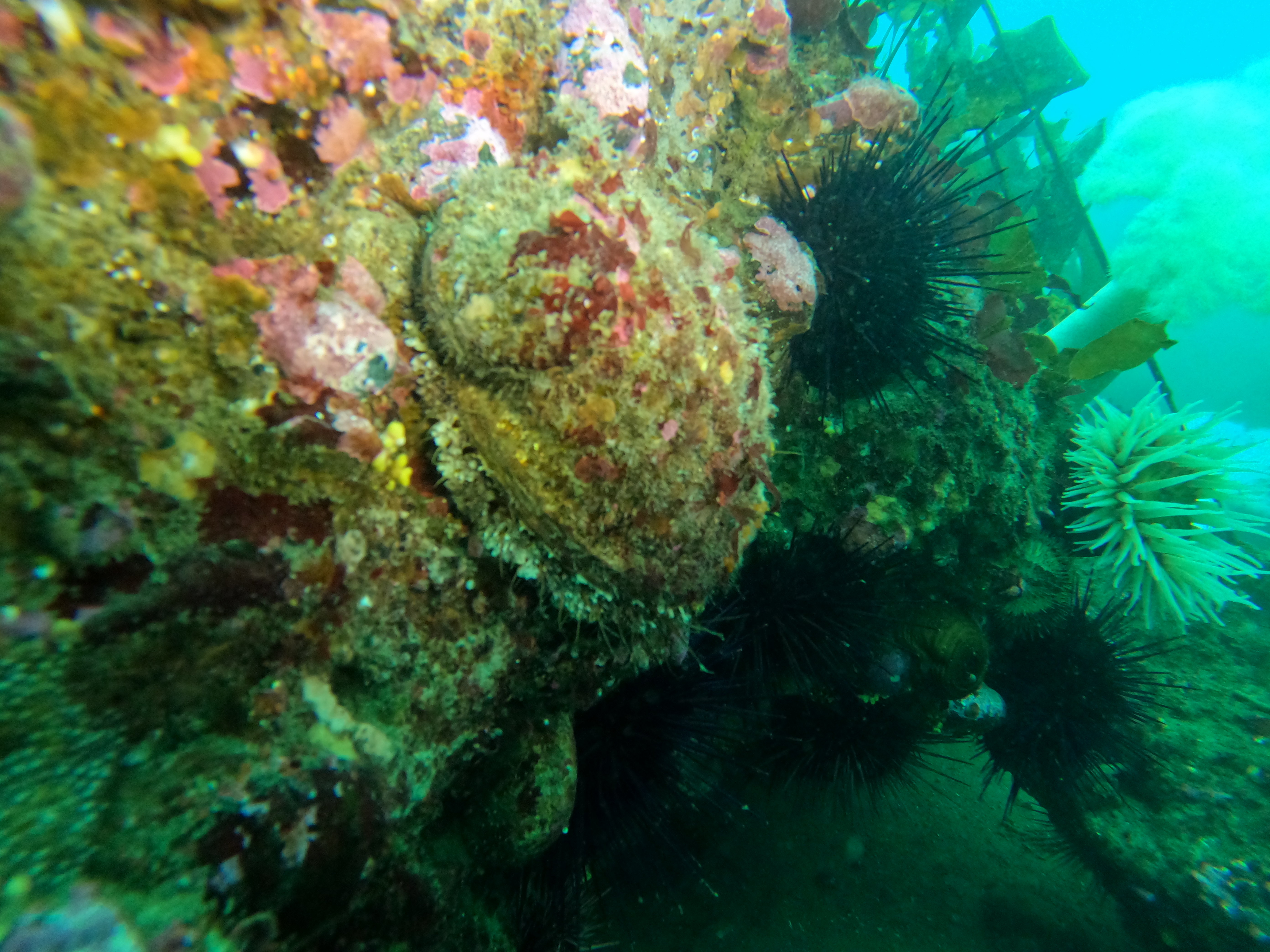Pinto Abalone
The Clallam Marine Resources Committee is conducting a comprehensive survey initiative to assess the status of endangered pinto abalone, in partnership with Puget Sound Restoration Fund. By gathering population data through dive surveys, we aim to inform restoration priorities for this critical species.
Clallam MRC and PSRF conducted dive surveys for this project in both 2024 and 2025. In 2025, a total of 47 abalone - all adults - were found! Potential index and outplanting sites were also identified within the Port Angeles subregion.
Divers are trained in a specific protocol to systematically search an area for abalone. Credit for all photos on this page to Puget Sound Restoration Fund.


Divers follow a clear protocol for the survey. They use lights and move some objects to fully search the area for any abalone.






The pinto (northern) abalone, Haliotis kamtschatkana, is the primary abalone species indigenous to Washington waters. This large gastropod plays a vital ecological role as an herbivorous grazer that maintains rocky reef habitat for settlement of other invertebrates and canopy kelp. Populations are severely depleted throughout their range in this state and considered functionally extinct.
This is largely due to anthropogenic factors, including overharvesting during the legal recreational fishery and poaching during the 1980-90s (Bouma 2007, Carson and Ulrich 2019). Anecdotal evidence suggests significant poaching occurred in the Strait of Juan de Fuca during the late 1980s and early 1990s.
Pinto abalone are now listed as a Washington State Endangered Species as of May 2019, and are also listed as a U.S. Federal Species of Concern and a Canadian Endangered Species (Sowul et al. 2022). The low density of abalone means that individuals may not be able to find each other and reproduce successfully, accelerating population decline.
Steps are being taken to help restore the pinto abalone population in northern Puget Sound waters. Puget Sound Restoration Fund (PSRF), with oversight from WDFW, has developed a conservation aquaculture program designed to supplement depleted wild stocks. The hatchery, wet laboratory and nursery facilities, named the Kenneth K. Chew Center for Shellfish Research and Restoration (Chew Center), are located at the NOAA Marine Fisheries Research Station in Manchester, WA. Juvenile outplanting and monitoring have been underway since 2009.
The recovery project is a long-term collaboration between government agencies, NGOs, universities, tribes and more. This group includes researchers, managers, students and facilities support from WDFW, PSRF, Western Washington University’s Shannon Point Marine Center (WWU SPMC), the NOAA Manchester Research Station, the Port Townsend Marine Science Center (PTMSC), the University of Washington, School of Aquatic & Fishery Sciences (UW), the Seattle Aquarium and others.
PSRF and CCMRC aim to build on the survey work conducted in the San Juan Islands by conducting a synoptic population study at select locations along the Strait to identify remnant pinto abalone populations and assess potentially suitable areas for juvenile outplanting in a subsequent project phase.


Check out Washington Sea Grant's page on pinto abalone for more on their importance and critically endangered status, or the 2014 report through the Protected Resources Program Office on restoration options specific to the Pacific Northwest.
